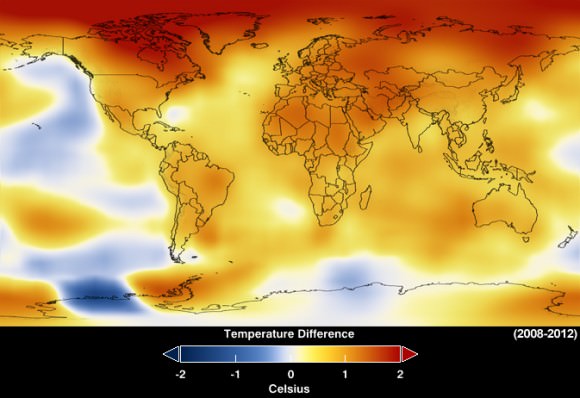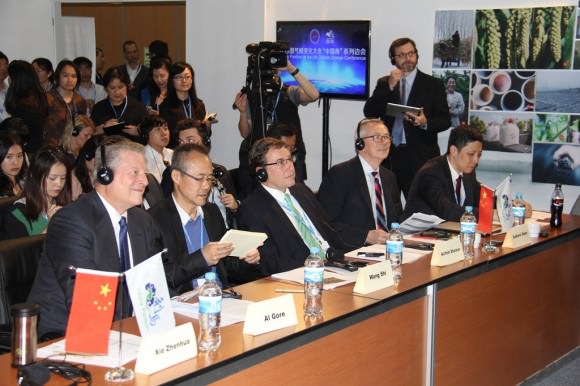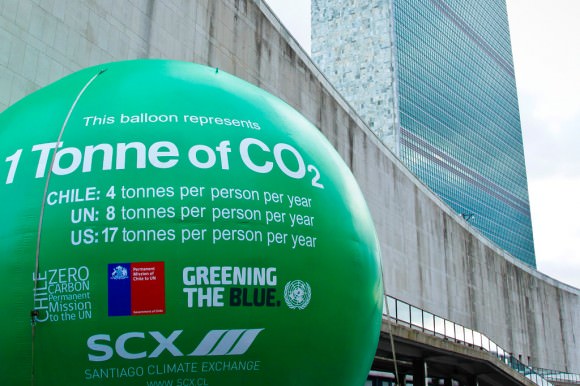Earlier this month, delegates from the various states that make up the UN met in Lima, Peru, to agree on a framework for the Climate Change Conference that is scheduled to take place in Paris next year. For over two weeks, representatives debated and discussed the issue, which at times became hotly contested and divisive.
In the end, a compromise was reached between rich and developing nations, which found themselves on opposite sides for much of the proceedings.
And while few member states walked away feeling they had received all they wanted, many expressed that the meeting was an important step on the road to the 2015 Climate Change Conference. It is hoped that this conference will, after 20 years of negotiations, create the first binding and universal agreement on climate change.
The 2015 Paris Conference will be the 21st session of the Conference of the Parties who signed the 1992 United Nations Framework Convention on Climate Change (UNFCCC) and the 11th session of the Meeting of the Parties who drafted the 1997 Kyoto Protocol.
The objective of the conference is to achieve a legally binding and universal agreement on Climate Change specifically aimed at curbing greenhouse gas emissions to limit global temperature increases to an average of 2 degrees Celsius above pre-industrial levels.

This temperature increase is being driven by increased carbon emissions that have been building steadily since the late 18th century and rapidly in the 20th. According to NASA, CO² concentrations have not exceeded 300 ppm in the upper atmosphere for over 400,000 years, which accounts for the whole of human history.
However, in May of last year, the National Oceanic and Atmospheric Administration (NOAA) announced that these concentrations had reached 400 ppm, based on ongoing observations from the Mauna Loa Observatory in Hawaii.
Meanwhile, research conducted by the U.S. Global Change Research Program indicates that by the year 2100, carbon dioxide emissions could either level off at about 550 ppm or rise to as high as 800. This could mean the difference between a temperature increase of 2.5 °C, which is sustainable, and an increase of 4.5 °C (4.5 – 8 °F), which would make life untenable for many regions of the planet.
Hence the importance of reaching, for the first time in over 20 years of UN negotiations, a binding and universal agreement on the climate that will involve all the nations of the world. And with the conclusion of the Lima Conference, the delegates have what they believe will be a sufficient framework for achieving that next year.
While many environmental groups see the framework as an ineffectual compromise, it was hailed by members of the EU as a step towards the long-awaited global climate deal that began in 1992.
“The decisions adopted in Lima pave the way for the adoption of a universal and meaningful agreement in 2015,” said UN Secretary-General Ban Ki-moon in a statement issued at the conclusion of the two-week meeting. In addition, Peru’s environment minister – Manuel Pulgar-Vidal, who chaired the summit – was quoted by the BBC as saying: “As a text it’s not perfect, but it includes the positions of the parties.”

Amongst the criticisms leveled by environmental groups is the fact that many important decisions were postponed, and that the draft agreement contained watered-down language.
For instance, on national pledges, it says that countries “may” include quantifiable information showing how they intend to meet their emissions targets, rather than “shall”. By making this optional, environmentalists believe that signatories will be entering into an agreement that is not binding and therefore has no teeth.
However, on the plus side, the agreement kept the 194 members together and on track for next year. Concerns over responsibilities between developed and developing nations were alleviated by changing the language in the agreement, stating that countries have “common but differentiated responsibilities”.
Other meaningful agreements were reached as well, which included boosted commitments to a Green Climate Fund (GCF), financial aid for “vulnerable nations”, new targets to be set for carbon emission reductions, a new process of Multilateral Assessment to achieve new levels of transparency for carbon-cutting initiatives, and new calls to raise awareness by putting climate change into school curricula.
In addition, the Lima Conference also led to the creation of The 1 Gigaton Coalition, a UN-coordinated group dedicated to promoting renewable energy. As stated by the UNEP, this group was created “to boost efforts to save billions of dollars and billions of tonnes of CO² emissions each year by measuring and reporting reductions of greenhouse gas emissions resulting from projects and programs that promote renewable energy and energy efficiency in developing countries.”

Coordinated by the United Nations Environment Programme (UNEP) with the support of the Government of Norway, they will be responsible for measuring CO² reductions through the application of renewable energy projects. The coalition was formed in light of the fact that while many nations have such initiatives in place, they are not measuring or reporting the drop in greenhouse gases that result.
They believe that, if accurately measured, these drops in emissions would equal 1 Gigaton by the year 2020. This would not only be beneficial to the environment, but would result in a reduced financial burden for governments all across the world.
As UNEP Executive Director Achim Steiner stated in a press release: “Our global economy could be $18 trillion better off by 2035 if we adopted energy efficiency as a first choice, while various estimates put the potential from energy efficient improvements anywhere between 2.5 and 6.8 gigatons of carbon per year by 2030.”
Ultimately, the 1 Gigaton Coalition hopes to provide the information that demonstrates unequivocally that energy efficiency and renewables are helping to close the gap between current emissions levels and what they will need to come down to if we hope to meet a temperature increase of just 2 °C. This, as already stated, could mean the difference between life and death for many people, and ultimately for the environment as a whole.
The location of UNFCCC talks are rotated by regions throughout United Nations countries. The 2015 conference will be held at Le Bourget from 30 November to 11 December 2015.


The UN is a totally corrupt dis-Organisation. So nothing positive will ever come out of their “conferences”.
Human personal short term interests will make sure nothing is ever done to mitigate Global Warming .
The Metalhydrates in the oceans will continue to bleed into the atmosphere.
Global warming is assured
Why “conferences” with quotes? Are they actually something else in disguise? Like a bar-b-que or a dance party?
I think it is more like spring break at Daytona Beach.
They even used diesel generators to provide power 24/7, talk about a carbon foot print.
Current climate shift may be past the tipping point. While this shift may not be solely induced by human activity…continued air/ground/water pollution and massive carbon releases into the environment may be accelerating this shift.
UN process is akin to a group of people debating how to put out a fire in the most economical fashion as the house is burning to the ground. Pathetic leadership on so many levels.
Since the global temperature has changed nothing at all during the last two decades, it is especially important to now abolish all rocket launchers since they spew out gasses which contribute to this catastrophic non-change in the global temperatures. The green movement, a mixture of islamists and climate change believers, require that all astronomy and space flight is abolished immediately. Can you imagine how many poor animals must be killed in order to build one of them rockets?
Someone forgot to take their anti-delusional medicine today.
Can you imagine how many animals you’ve killed today by driving to work (in your own car), using electrizity for your computer, buying meat at your local store (with all the methane production in the back)…
Wow, you’re impressively loud and vitriolic about something you obviously know nothing actual about. Kudos for prancing around the town square proudly in the nude and gibbering at the crowd like a spastic fool…
Lets see now. The temperature hasn’t increased at all since the late 1990’s. Is that true or not? Do I know that, or do I not know that? Has CO2-emissions increased exponentially during a few decades without any effect at all on the global temperature? Should we learn from what is actually happening in reality, or should we deny the reality and instead only focus on repeating failed religious political dogma?
Can anything happen which could make you change your opinion about “the climate panic”? What if the temperature didn’t increase at all for another quarter of a century, would that possibly affect your judgement on the topic? Or is it a religious “truth” for you which cannot change no matter whatever happens?
The climate panic people propose to abolish all energy production, abolish all industry, abolish all transportation ,abolish all agriculture. They claim that there are too many human beings alive and promise to change that, one way or another. It is an ancient christian tradition, this thing with doomsday persons who define everything which is good, as evil. According to them it is evil that human beings are alive and transform nature to a nice inhabitable place.
“According to them it is evil that human beings are alive and transform nature to a nice inhabitable place.”
Strange, because the Bible (their holy book) said:
“Be fruitful and increase in number; fill the earth and subdue it. Rule over the fish in the sea and the birds in the sky and over every living creature that moves on the ground.” Gen 1-26
Do they really know what they want?
Government tortured Jesus to death. And the believers think that was good. They like to think of themselves as sheep. You see, it is the conclusion which is constant for the slaves: destruction and death. Whether they motivate that constant conclusion with the Bible or with false climate panic about the non-warming climate, doesn’t matter. They only care about the conclusion, which is slavery, to be slaves, to hate life and go for destruction and death. “Sacrifice” as they themselves call that concept.
FarAwayLongAgo thinks everything is a fraud.
I personally put climate science deniers on the same level as moon hoax conspiracy theorists, homeopathy enthusiasts, and anti-vaccination nutters, and just a small step above those people who think world leaders are reptile aliens in disguise.